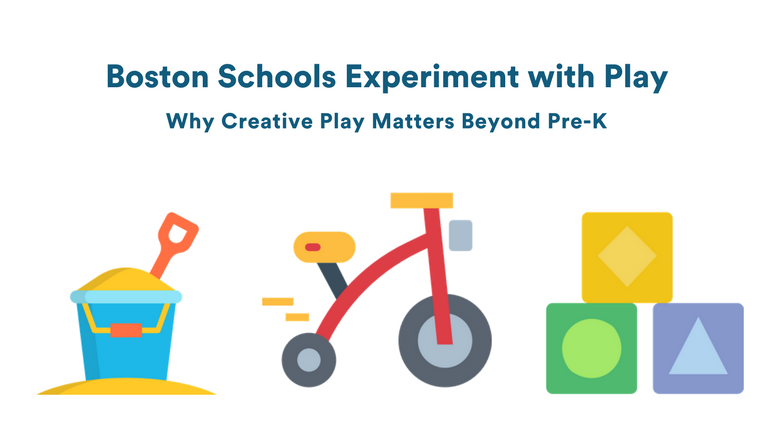
There’s a saying that has spread through the education sector in the past several years that “kindergarten is the new first grade”.
With the adoption of more rigorous standards and the increasing emphasis on standardized tests, schools are eager to get students reading and writing from the first day they walk in the door.
There’s one school district, though, that’s making moves in the opposite direction by experimenting with a kindergarten curriculum that looks more like pre-school.
Boston Public Schools has been rolling out a play-based curriculum in kindergarten classrooms over the past five years.
The philosophy behind the change stems from the idea that students learn better through self-directed play than they do through structured direct instruction.
This makes perfect sense, given much of the research as of late around the importance of autonomy in learning.
The more control students have over their learning environment and process, the more likely they are to want to learn.
Many education experts are watching Boston schools closely to see what the outcomes will be and if district administrators will consider making similar moves in older grades as well.
Bringing Play into Your Classroom
“Play” can look like a lot of different things. Depending on the age of your students and the subject you teach, there are some types of play that might be more appropriate than others.
Having kids build with blocks in a high school English class? Probably not going to fly.
But with a little creativity and planning, there are plenty of ways that teachers of all grades and subjects can help students benefit from a little fun.
Read on for some ideas on how to make your classroom more playful.
Use Stations
Students are much more likely to give their work their all if they feel that they have some say in what they are doing.
Stations are a great way to give students options while still setting a high bar. All stations should have a clear objective and a set expectation of what students should accomplish.
Beyond those basic structures, the options are limitless.
For example, in a reading class where students are working on analyzing theme students might have the option of making a comic strip at one station, preparing a skit at another, or making a powerpoint presentation at a third.
Take Advantage of Technology
There are tons of educational websites and platforms with an emphasis on fun (ok, and learning).
Take advantage of technology as a different way to let students demonstrate mastery.
Not only will students be building tech literacy, but they’ll be showing what they know in a fun way.
Students can demonstrate understanding of an historic event using Powtoon to create an animated cartoon.
They could write a rap song about the quadratic function on Flocabulary.
And of course, they can master their typing proficiency by playing Nitro Type.
Game-ify Learning
A little friendly competition is a great way to review material in a fun and playful way.
There are dozens of classroom games that provide huge fun and learning payoffs for relatively little preparation.
Some of our favorites include Pictionary, I have…Who has?, Trashketball, Charades, and Hot Seat.
Get Hands On
Kids can be fidgety. So, the more you can make learning tangible, the better.
Have students conduct experiments in science class. Bring out the manipulatives in math class. Let students handle real photographs in history class.
Just because they’ve outgrown toy cars doesn’t mean that they can’t benefit from using their hands to learn.
Take Learning Outside
Take learning beyond the four walls of your classroom.
Field trips are awesome if your school has a budget for them. Even without an organized trip, though, students can benefit from some outdoor learning.
Challenge students to use their cell phone cameras to capture shots of different types of angles in geometry.
Or assign students each a role and have them act out the process of photosynthesis on the playground.
Once, you’re outside, the sky’s the limit.
Give some of these ideas a try, and you’ll likely agree that these Boston schools are onto something.
Incorporating play into learning can be great fun for students and teachers and is a fantastic way to foster internal motivation and understanding.



i love the text
In nitro type I mean…
do you guys even care? I really want to see you ban me. My name on this comment is my name in nitro type. plz ban me.
Hey Travis can I get a billion nitro dollars? thx you person who pays no attention to people who leave comments:)